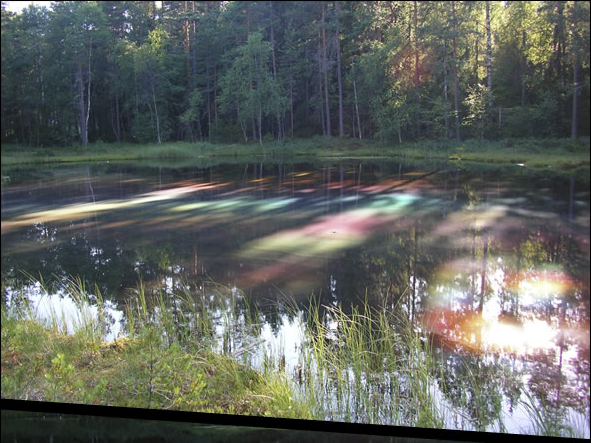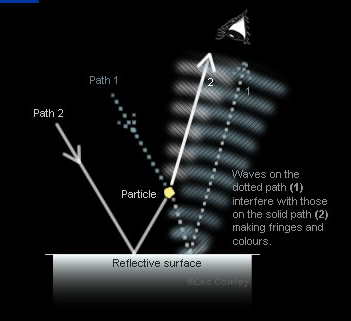Adolphe Quételet
Adolphe Quételet: Unveiling the Phenomenon of Quételet Colours
Adolphe Quételet, known for his contributions to statistics and sociology, also played a pivotal role in unraveling the captivating phenomenon of Quételet colours. These mesmerizing displays of iridescent hues can be observed on still water surfaces covered with a thin layer of dust, pollen, or algae. Even dusty windows can exhibit similar effects, making it tempting to resist the urge to clean them!
The origin of Quételet scattering lies in the presence of small particles near a reflective surface. The vibrant colours arise from the intricate interplay between two sets of waves. The first set involves waves of light that are initially scattered by a particle, then reflected by the mirror, and ultimately enter the observer's eye. The second set comprises waves that are scattered by the particle after being reflected by the mirror. The constructive or destructive interference between these waves determines the brightness or darkness of the colours observed. This interference is influenced by various factors, including the angles of the sun and observation, as well as the wavelength of light.
A complete Quételet display encompasses a system of vividly colored fringes, often accompanied by a corona generated by light that scatters directly from the particles. These ethereal fringes and coronas can captivate onlookers with their intricate patterns and ever-changing hues.
Understanding the Mechanics of Quételet Colours
To gain a deeper understanding of Quételet colours, it is essential to explore the mechanics behind this captivating optical phenomenon. The process begins with incident light encountering small particles suspended in the air near a reflective surface, such as water or glass. These particles act as miniature scatterers, altering the path of light rays and giving rise to intriguing optical effects.
When light interacts with these particles, it scatters in different directions due to their presence. Some of the scattered light rays travel towards an observer's eye, while others are reflected by the mirror-like surface before reaching the observer. The interplay between these two sets of scattered light waves leads to constructive or destructive interference, resulting in the vivid hues observed in Quételet colours.
The exact colors observed in a Quételet display depend on several factors. The angle at which the observer views the phenomenon, the angle of the sun in relation to the reflective surface, and the wavelength of light all play crucial roles. These variables determine the interference patterns that manifest as bands or rings of iridescent color.
Exploring the Fascinating Variations of Quételet Colours
Quételet colours exhibit a remarkable range of variations, adding to their allure and intrigue. Some noteworthy variations include:
- Ring Patterns: On still water surfaces, Quételet colours often form circular or elliptical rings. These rings result from the interference between scattered light waves, creating concentric circles of vibrant hues.
- Band Structures: In certain cases, Quételet colours manifest as elongated bands rather than concentric rings. These bands can span across the water's surface, creating captivating patterns and variations in color intensity.
- Coronas: A Quételet display is often accompanied by a corona, which appears as a halo surrounding the central region of colored fringes. Coronas arise from light that scatters directly from the particles, producing an ethereal glow that enhances the overall visual spectacle.
The Influence of Environmental Factors on Quételet Colours
While the mechanics behind Quételet colours provide a foundation for understanding this optical phenomenon, environmental factors also play a significant role in shaping the observed displays. The interplay between sunlight, observation angles, and atmospheric conditions can lead to intriguing variations in Quételet colours. Here are some key factors to consider:
- Sun Angle: The angle at which sunlight strikes the reflective surface affects the intensity and distribution of the colors observed. As the sun's angle changes throughout the day, the appearance of Quételet colours can shift, creating a dynamic and ever-changing visual experience.
- Observation Angle: The angle at which an observer views the Quételet display influences the perceived colors and patterns. By changing their position relative to the phenomenon, observers can witness different aspects of the vibrant fringes and coronas.
- Atmospheric Conditions: The presence of atmospheric pollutants, such as dust, pollen, or algae, significantly impacts the visibility and characteristics of Quételet colours. These particles act as scatterers, influencing the interference patterns and altering the overall appearance of the phenomenon.
Appreciating Quételet Colours: A Blend of Science and Aesthetics
Quételet colours not only captivate with their scientific intricacies but also offer a visually stunning spectacle that merges art and nature. Observing these vibrant displays provides a unique opportunity to appreciate the beauty and complexity of atmospheric optics. By delving into the mechanics and variations of Quételet colours, we gain a deeper understanding of the fascinating interplay between light, particles, and reflective surfaces.
Next time you encounter a still pond adorned with rings of iridescent hues or peer through a dusty window unveiling captivating bands of color, take a moment to marvel at the phenomenon of Quételet colours. In these fleeting displays, we witness the harmonious dance of light and particles, reminding us of the wonder and enchantment that permeate our natural world.


Quételet Colours on a small still pond seen by Bjørn Revil near Oslo, Norway July 26, '08. Images ©Bj�rn Revil, shown with permission.
Still water covered with a thin layer of dust, pollen or algae often show rings, bands or regions of iridescent colour. Dusty windows show the same effects - don't clean your windows!
Quételet scattering, named after Adolphe Quételet more known for his statistics and sociology, is responsible.
The essentialas are small particles near a reflective surface. The colours come from interference between two sets of waves. (1) Waves from light first scattered by a particle and then reflected by the mirror before entering the eye. (2) Waves scattered by the particle from light that has first been reflected by the mirror. Light waves along the two paths interfere constructively (brightness) or destructively (darkness) depending on the sun and observation angles and the light wavelength (colour). A complete Quételet display is a system of coloured fringes often accompanied by a corona produced by light scattered directly from the particles.

Note: this article has been automatically converted from the old site and may not appear as intended. You can find the original article here.
Reference Atmospheric Optics
If you use any of the definitions, information, or data presented on Atmospheric Optics, please copy the link or reference below to properly credit us as the reference source. Thank you!
-
<a href="https://atoptics.co.uk/blog/adolphe-qu-telet/">Adolphe Quételet</a>
-
"Adolphe Quételet". Atmospheric Optics. Accessed on December 22, 2024. https://atoptics.co.uk/blog/adolphe-qu-telet/.
-
"Adolphe Quételet". Atmospheric Optics, https://atoptics.co.uk/blog/adolphe-qu-telet/. Accessed 22 December, 2024
-
Adolphe Quételet. Atmospheric Optics. Retrieved from https://atoptics.co.uk/blog/adolphe-qu-telet/.